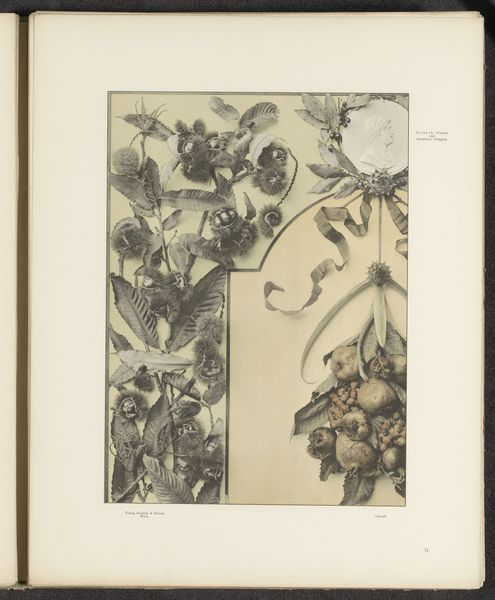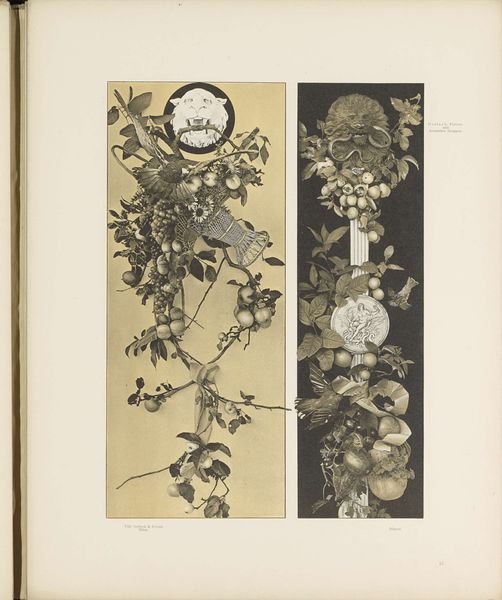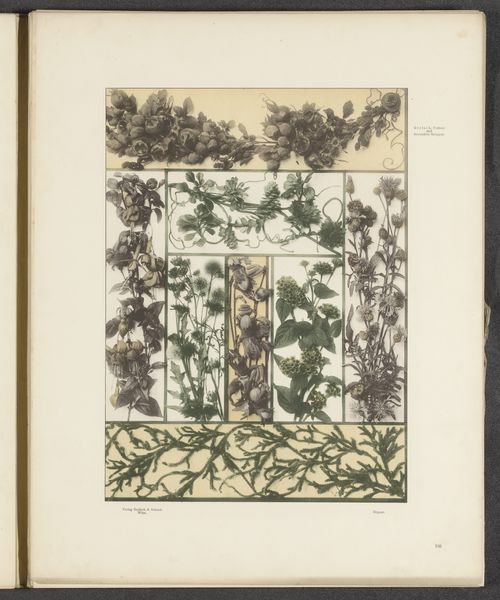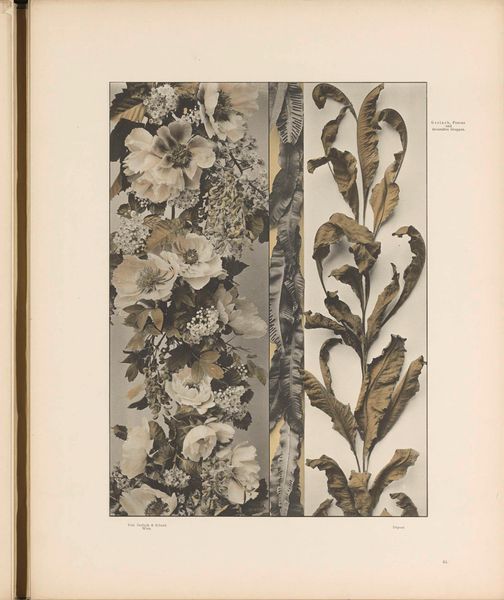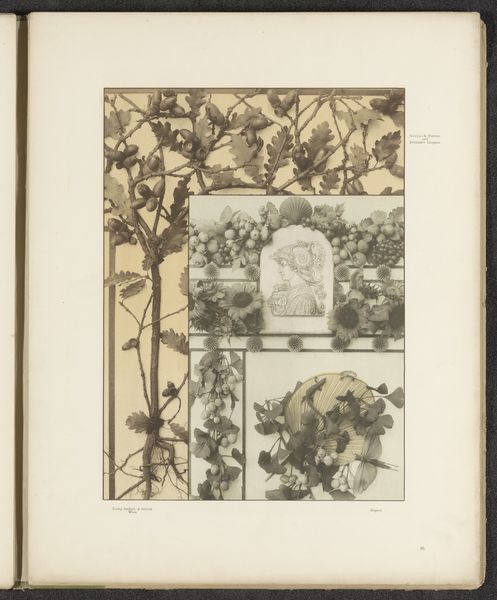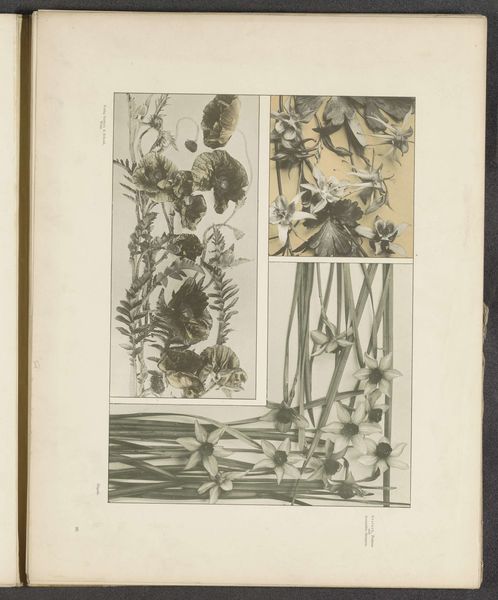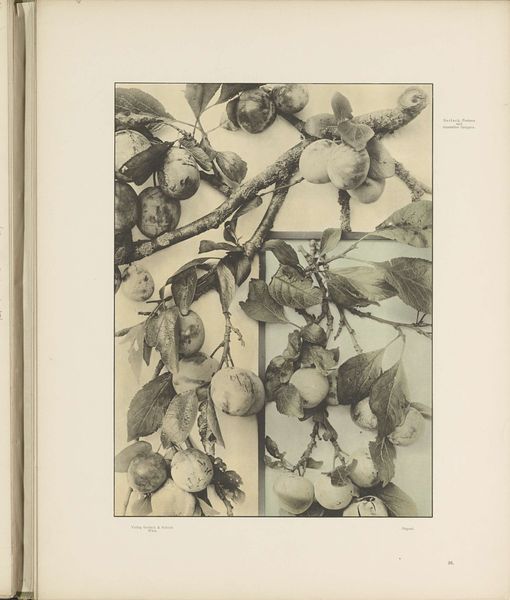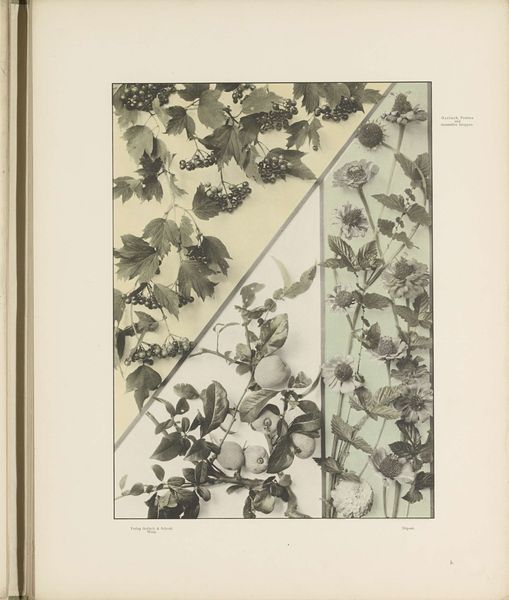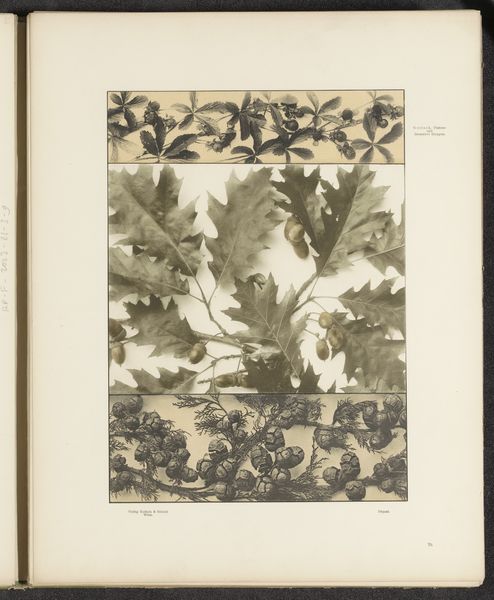
Festoen van vruchten en een stilleven van vruchten en een vaas met anjers before 1897
0:00
0:00
drawing, print
#
drawing
# print
#
academic-art
Dimensions: height 293 mm, width 214 mm
Copyright: Rijks Museum: Open Domain
This anonymous print presents a festoon of fruit, a still life, and a vase with carnations using an engraving technique. It can be seen as part of a longer tradition of still-life painting which began in the Netherlands in the 16th century. These paintings often had symbolic meanings related to wealth, mortality, and religion. What strikes me about this image is its lack of information, we don't know who made it, when it was made, or even why. This raises questions about the role of the institution in preserving and presenting art. How do the decisions of curators and historians shape our understanding of a work? What stories get told and what stories are left out? These questions highlight the importance of historical research. By looking at the social and cultural context in which art is made, we can begin to understand its meaning and significance. We can investigate the social status of the artist, the patronage system, and the intended audience. This kind of research allows us to see art not as an isolated object but as a product of its time.
Comments
No comments
Be the first to comment and join the conversation on the ultimate creative platform.
